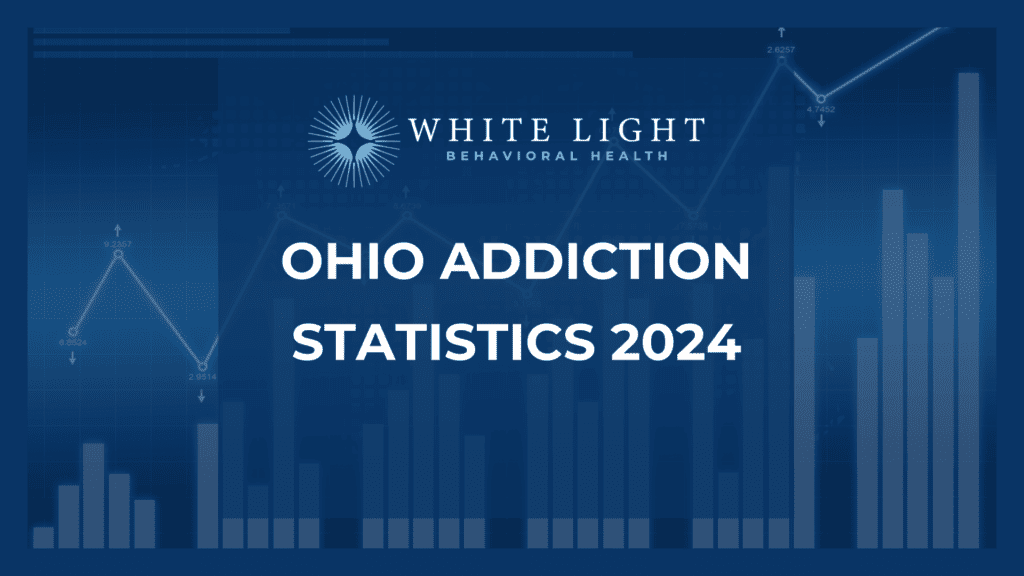How Many Xanax Is a Felony?
With each passing year, the demand for swift-acting and potent pharmaceutical solutions has surged, propelling an unprecedented surge in the development and use of these therapeutic agents. Nevertheless, amid this wave of progress, a troubling issue has emerged: the misuse and abuse of these potent drugs. One of these drugs that is commonly misused is Xanax.
Uses Of Xanax
Xanax belongs to the benzodiazepine class of drugs, which act on the central nervous system to produce calming effects. Thus, it is used to treat a variety of issues.
Anxiety Disorders
Its ability to modulate the intricate balance of neurotransmitters within the brain makes Xanax a vital tool in treating anxiety disorders. By binding to GABA-A receptors and facilitating the influx of chloride ions, Xanax mitigates excessive neuronal excitation thereby curbing the overactivity that characterizes anxiety.
This physiological response manifests as a calming effect, reducing the heightened sense of worry, unease, and physical tension associated with generalized anxiety disorder (GAD), social anxiety disorder (SAD), and specific phobias. By restoring a more normalized neural state, Xanax offers relief from anxiety, enabling individuals to engage more fully in daily life but Xanax should be taken appropriately.
Insomnia
Through its interaction with GABA receptors and subsequent enhancement of inhibitory neurotransmission, Xanax induces a calming effect on the central nervous system, effectively promoting relaxation and drowsiness. This dual action on both neural and muscular domains aids in mitigating the physical manifestations of stress and anxiety that often contribute to muscle spasms. Thus, Xanax can produce a calming effect that can promote relaxation and facilitate sleep.
Panic Disorders
By interacting with GABA receptors and enhancing inhibitory signaling, Xanax orchestrates a modulation of neurotransmitter activity. This, in turn, dampens the heightened neural responses responsible for triggering panic. Its rapid onset of action makes it effective during acute panic episodes during which individuals experience fear, heart palpitations, chest constriction, and suffocating dread according to a study by Jeffrey Susman published in the National Library of Medicine.
Muscle Spasms
While not its primary application, Xanax can be employed to alleviate muscle spasms and tension, particularly when these physical symptoms manifest as underlying anxiety or stress as per a report from the United States Drug Enforcement Administration. Through its modulation of GABAergic neurotransmission, Xanax exerts a calming influence on the central nervous system, which can extend to relaxing muscular tension. By addressing the root causes of muscle spasms, Xanax provides temporary relief from physical discomfort. Thereby offering a multifaceted approach to managing conditions where muscular symptoms are intertwined with emotional stress.
The Addictive Nature of Xanax
It’s important to note that while Xanax has therapeutic benefits its use comes with potential risks and drawbacks. Because of its sedative and potentially habit-forming nature, Xanax is usually prescribed for short-term use to minimize the risk of addiction and withdrawal.
Prolonged or excessive use of Xanax can lead to tolerance, physical and psychological dependence, and withdrawal symptoms upon discontinuation. Therefore, the Xanax dosage is prescribed by a medical professional who carefully evaluates the individual’s needs and tailors the treatment plan accordingly.
Misuse of Xanax
Its ability to induce feelings of relaxation and euphoria has led to the misuse of Xanax as a recreational drug, often taken in higher doses or combined with other substances to intensify its effects. This misuse can lead to dangerous outcomes. The demand for quick relief solutions and altered states of consciousness have driven individuals, both with and without legitimate medical needs, to seek out Xanax for non-therapeutic purposes.
For this reason, the legal possession of Xanax is strictly regulated based on an individual’s prescription. Xanax is classified as a Schedule IV controlled substance, and the limitations on the number of such substances that an individual can possess are usually calculated based on 30 days. People with a valid Xanax prescription can legally hold up to 30 tablets of the medication within a given period. These regulations on controlled substance possession are put in place by the federal government. Individual states may impose more stringent rules regarding Xanax possession to further safeguard against potential misuse.
How Much Xanax Is Considered a Felony?
The threshold for a felony possession charge related to Xanax possession varies across states, with the common criteria being possession of more than a 30-day supply of the drug without a valid prescription.
The classification of felony possession can also be influenced by the individual’s intent. For instance, if there is a clear indication of intent to distribute, having two or more kilograms of Xanax could lead to a class B felony charge. Conviction under this charge might result in penalties such as imprisonment for one to 10 years or a fine of up to $25,000 as per a report of Washington State Legislature.
The Effects of Misusing Xanax
Xanax is a potent force that leaves undeniable marks on the lives of individuals who misuse the drug.
Addiction
This is a compulsion to consume the drug beyond prescribed parameters. Individuals who fall into this pattern frequently surpass recommended dosages or increase the frequency of intake thereby setting the stage for a precarious physical dependence on Xanax.
Addiction to Xanax is prevalent as the brain adapts to the presence of the drug and starts seeking to maintain the new equilibrium. This adaptation can lead to a state where those who are reliant on Xanax encounter distressing withdrawal symptoms if they stop using. These symptoms include heightened anxiety, restlessness, irritability, insomnia, muscle aches, and, in severe cases, seizures.
Overdose
Overdosing is a dire consequence of excessive and uncontrolled consumption of Xanax. It is characterized by a spectrum of severe effects, most notably respiratory depression where the central nervous system’s ability to regulate breathing becomes compromised. This dangerous condition can lead to oxygen deprivation, pushing individuals toward a state of coma and, in the most tragic instances, even death. For this reason, if or when a suspected Xanax overdose occurs, swift action is required.
Memory Impairment
Drugs.com says the misuse of Xanax can negatively impact memory function. In the short term, Xanax can affect the storage of memories, leaving individuals with an impaired ability to recollect recent occurrences. Moreover, this impact can extend to the long term as Xanax hinders the formation of new memories and disrupts the intricate process of encoding information into lasting mental impressions.
Blackouts
This is a situation where individuals find themselves enveloped in periods of profound cognitive impairment, rendering them oblivious to their surroundings and actions. Xanax’s impact on memory and cognitive function can lead to these alarming lapses during which people may engage in activities that they do not recall later. The consequences of Xanax-induced blackouts can be far-reaching, potentially resulting in life-altering events, such as risky behaviors like driving under the influence or unprotected sexual encounters.
Increased Risk of Accidents
Misusing Xanax can lead to a hazardous scenario marked by an escalated susceptibility to accidents. It is brought about by the drug’s capacity to distort judgment and impede coordination. The drug’s impact on cognitive clarity and motor skills can lead to a higher vulnerability to accidents as individuals grapple with compromised decision-making and impaired physical control. The result is a broad spectrum of accidents, varying from vehicular collisions to slips, and falls, and a high probability of unintentional self-inflicted harm.
Treatment Options for Xanax Addiction
Combatting Xanax addiction is no easy feat. However, there are various ways to overcome dependence on the drug.
Medication-assisted Treatment
This approach incorporates specialized medications tailored to counteract the physiological challenges of addiction. One such option is Suboxone, a blend of buprenorphine and naloxone. As a partial opioid, buprenorphine alleviates withdrawal by engaging opioid receptors without inducing a complete response thereby mitigating the discomfort of Xanax withdrawal.
Naloxone is an opioid antagonist that complements this effect by blocking opioid actions, curbing the potential for misuse. Naltrexone is another opioid antagonist that fortifies the arsenal against Xanax addiction by thwarting its effects and serving as a deterrent for relapse.
Support Groups
Support groups foster a communal haven where individuals find solace, understanding, and camaraderie among those who understand their struggles. In these spaces, the shared experiences create a sense of empathy, solidarity, and a judgment-free environment. Individuals can candidly share their challenges, milestones, and setbacks.
They can also find refuge in the understanding and encouragement offered by peers who have walked similar paths. With the right members, these groups can become sanctuaries of empowerment, fortifying individuals with a sense of belonging, affirmation, and the unwavering assurance that they are not alone in their journey toward liberation from Xanax addiction.
Behavioral Therapy
Through therapeutic engagement, individuals embark on a journey of self-discovery. It aids in harnessing insights to unravel the intricacies of addiction and gaining an understanding of the triggers that fuel the reliance on Xanax. Within this category, cognitive-behavioral therapy (CBT) is one of the practical choices that help identify and counteract negative thought patterns that lead to addiction.
Dialectical behavior therapy (DBT) is another option that helps foster emotional regulation and endows individuals with tools to navigate stressors resiliently. Additionally, motivational interviewing (MI) is a compassionate approach that motivates change, facilitating the development of personalized recovery blueprints.
Inpatient Treatment
This is a robust and comprehensive avenue for addressing Xanax addiction. It is particularly tailored to individuals grappling with formidable challenges in breaking free from the grips of this dependency.
This immersive approach extends a safety net of round-the-clock supervision, creating a cocoon where individuals can navigate withdrawal and recovery under the vigilant care of medical and treatment professionals. It is aimed at aiding individuals to forge and develop effective coping strategies to relearn and rebuild their lives afresh.
Outpatient Treatment
Outpatient treatment offers a flexible and supportive avenue for addressing Xanax addiction. The structure is tailored to individuals who can maintain sobriety independently while seeking supplementary guidance. It relies heavily on the capacity for self-control. Individuals usually attend regular therapy sessions and weekly support meetings to nurture ongoing recovery efforts. This structured engagement equips participants with vital tools for sustaining sobriety, fostering emotional resilience, and honing coping mechanisms while maintaining regular routines and jobs.
In the intricate struggle of battling Xanax addiction, the challenges extend beyond legal ramifications. They encompass a labyrinth of emotional and physiological struggles. Thus, recognizing the need for professional guidance is not a testament to weakness but rather a pivotal step toward regaining control and forging a path to recovery.
At White Light Behavioral Health, we support and believe in second chances. Our state-of-the-art facility is run and operated by seasoned professionals who are well-versed in addressing addiction cases. As you navigate this arduous journey, do not hesitate to reach out to us. We offer personal custom solutions to help you get back on track and gain control of your life’s trajectory.
Is possessing Xanax without a prescription a felony?
Possessing Xanax without a prescription can be considered a felony in many jurisdictions, as it is classified as a controlled substance due to its potential for abuse and addiction. Laws regarding the possession of Xanax without a prescription vary by location, but in general, possessing Xanax without a valid prescription can lead to legal consequences, including felony charges.
How many Xanax pills constitute felony possession?
The number of Xanax pills that can result in felony charges varies depending on local laws and circumstances. While there isn’t a specific number universally designated as felony possession, possessing a large quantity of Xanax pills beyond what would be considered for personal use can increase the likelihood of facing felony charges.
Can Xanax exacerbate anxiety symptoms?
Xanax, while commonly prescribed for anxiety, can paradoxically worsen anxiety symptoms in some individuals, especially with long-term use or misuse. While it may initially provide relief, tolerance can develop, leading to increased anxiety between doses or when discontinuing the medication. It’s essential to discuss any concerns about worsening anxiety with a healthcare provider.
What are the penalties for felony possession of Xanax?
Penalties for felony possession of Xanax can include fines, probation, and imprisonment. The severity of the penalties depends on factors such as the quantity of Xanax in possession, prior criminal history, and jurisdictional laws. In some cases, individuals may also be required to undergo drug rehabilitation programs as part of their sentencing.
How can someone avoid felony charges related to Xanax possession?
To avoid felony charges related to Xanax possession, individuals should ensure they only use the medication as prescribed by a licensed healthcare professional. It’s essential to obtain Xanax legally with a valid prescription and refrain from sharing or selling it to others. If struggling with substance abuse or addiction, seeking help from a healthcare provider or addiction specialist is crucial.
Can possessing Xanax in a school zone lead to enhanced penalties?
Possessing Xanax in a school zone can lead to enhanced penalties in many jurisdictions. Laws often impose stricter punishments for drug offenses committed within a certain distance of schools, parks, or other designated areas where children frequent. Penalties for possessing Xanax in a school zone may include longer prison sentences and heavier fines.
How does Xanax abuse contribute to the opioid epidemic?
Xanax abuse contributes to the Ohio opioid epidemic by exacerbating the overall problem of prescription drug misuse and addiction. Xanax, classified as a benzodiazepine, is often abused in conjunction with opioids or other substances, leading to a higher risk of overdose and related health complications. Additionally, the illegal distribution and sale of Xanax further fuel the broader crisis of substance abuse and addiction.
Can Xanax addiction lead to criminal behavior?
Yes, Xanax addiction can lead to criminal behavior. As individuals become dependent on Xanax, they may engage in illegal activities to obtain the drug, such as theft or prescription fraud. Additionally, the impaired judgment and disinhibiting effects of Xanax can contribute to reckless or criminal behavior.
Does long-term Xanax use increase the risk of legal problems?
Long-term Xanax use can increase the risk of legal problems due to its potential for addiction, tolerance, and withdrawal symptoms. Individuals who misuse Xanax or become dependent on it may experience difficulties maintaining employment, relationships, and legal compliance, which can lead to various legal issues over time.
Does Xanax contribute to heightened anger issues?
Xanax use can sometimes lead to heightened anger issues or irritability as a side effect, particularly when taken in high doses or for an extended period. While it’s not a universal reaction, some individuals may experience mood changes, including increased agitation or hostility, while taking Xanax. Consulting a healthcare provider if experiencing anger issues while using Xanax is advisable.

Share This Post



